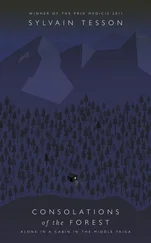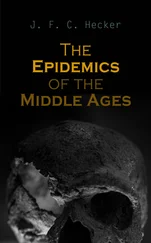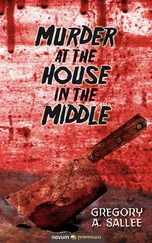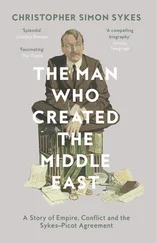‘Erm …’
‘If I told you that the wheel was invented in Mansfield, for instance.’
‘Yes, I could believe that. A lot of damn good engineers have come from Mansfield. There was a lot of talent in Blidworth – not much in Sutton, of course … Was the wheel invented in Mansfield, Robbie?’
‘It hasn’t been disproved.’
‘Well, we’ve got Robin Hood anyway,’ concludes my mother, growing weary. ‘I’m going to put the kettle on.’
* * *
Actually, how much longer Nottinghamshire and the Midlands will have Robin Hood is open to question. Ever since someone noticed that the early ballads mention a few locations across the border in Yorkshire – principally Barnsdale – there’s been a campaign to turn the original Nottinghamshire Man in Tights into a Salt-of-the-Earth Northerner TM. Not so long ago, a Yorkshire MP could be heard demanding that roadside signs proclaiming Nottinghamshire ‘Robin Hood Country’ be taken down. ‘We believe very strongly that Robin Hood was a Yorkshireman and we are aggrieved to read that we are now entering Robin Hood country [when we drive south into Nottinghamshire],’ David Hinchliffe, the absurdist ex-Member for Wakefield, was quoted as saying in the New York Times in 2004. ‘It’s a very, very serious business. The way things are going, the signs are going to get torn down by angry Yorkshiremen.’ Perhaps it was the report in the NYT that gave Russell Crowe the idea of basing his accent on Michael Parkinson’s dour growl when he played the lead in the most recent Hollywood Robin Hood movie, or perhaps it was the fact that Doncaster in Yorkshire suddenly developed a ‘Robin Hood Airport’ in 2005. If Yorkshire nationalists get their way, one day in the not too distant future ’Oodie is likely to find himself transformed into a plain-talking Yorkshireman, with a whippet instead of a bow under one arm and a flat cap instead of a green feathered hat on his head. There’s a small conceptual problem that might need to be addressed before that can happen, though. It’s hard to see how Robin Hood’s reputation for stealing from the rich to give to the poor can be reconciled with the stereotype of Yorkshire folk as tight-fisted – an image that’s been actively embraced and promulgated by many of the natives of ‘God’s own county’ (such modesty!). As the ‘Yorkshireman’s Creed’ has it: ‘If ever tha does owt for nowt / Do it for tha sen.’ In that sense, Robin of Sherwood is the antithesis of the classic Northerner.
On Sunday morning we all pile into the car and drive out through Clipstone, past the overgrown pit heads and towards the little village of Edwinstowe and the Sherwood Forest National Nature Reserve, which contains the Major Oak, the mystical thousand-year-old tree that – legend has it – served as the Merry Men’s meeting place.
What does Robin Hood stand for exactly? What values does he represent? Social justice (stealing from the rich to give to the poor), obviously; but more resonantly he’s also a symbol of ‘Merrie England’. ‘Merrie England’ is the way that nostalgic Victorians, dismayed by the effects of the growing urbanism of their own age, liked to idealise their country’s pre-industrial past. Indeed, it was with a reference to Robin and his crew that the nineteenth-century essayist William Hazlitt popularised the concept of England’s idyllic, liberty-loving medieval past: ‘The beams of the morning sun shining on the lonely glades, or through the idle branches of the tangled forest, the leisure, the freedom … were sufficient to justify the appellation of “Merry Sherwood”, and in like manner, we may apply the phrase to Merry England .’ It’s interesting that the most romantic representative of this pastoral paradise of ancient freedoms should have hailed from the East Midlands, the area characterised as ‘Industrial, built-up, heavily populated, busy, no countryside’ in that recent tourist-board survey. That’s obviously not how an earlier age thought of the region. John Hamilton Reynolds elaborated on the idea of Robin as the symbol of this Edenic utopia in a sonnet to his friend John Keats:
Robin the outlaw! Is there not a mass
Of freedom in the name? …
It tells a tale of forest days – of times
That would have been most precious unto thee:
Days of undying pastoral liberty:
Sweeter than music old of abbey chimes –
Sweet as the virtue of Shakespearian rhymes –
Days, shadowy with the magic greenwood tree!
‘Now, Hector, what we’re about to go and look at,’ I explain enthusiastically as we set off along a winding path from the car park, ‘is Robin Hood’s special tree. It’s absolutely enormous. Robin and Alan-a-Dale and Friar Tuck and Little John and all the rest of the merry band used to climb up inside it to hide from the nasty Sheriff of Nottingham.’
I can see I’m losing his attention.
‘I’m a little bit bored, Dad,’ he says, pulling his beloved Ben 10 figurine from my bag.
‘Smile and I’ll get you an ice cream.’
He gives me a pained grin so I buy him a 99. A deal’s a deal.
My mother begins to recount a favourite family story as we near our destination. ‘Your Auntie Madge brought the Americans here when they came over for Jeff and Karrie’s wedding,’ she begins. ‘She told them she was going to show them the biggest tree they’d ever seen. So they drove over and Madge gave them the spiel as they were walking over from the car park – I think she even called it the biggest tree in the world – and then when they got into the clearing she said: “Well, isn’t it amazing?” And Karrie’s parents were really nice about it but Madge could see they were a bit underwhelmed. Anyway a few years later she went over to California to visit Jeff and Karrie, and while she was there they took her to Yosemite. That made her feel a bit embarrassed. “And you know, Kath, you couldn’t even see the tops of the trees there. That’s how tall they were,” Madge said to me. Well over 200 feet, Californian sequoias are. The Major Oak seemed a bit diddy by comparison. That put her in her place.’
At this point we emerge into a clearing and there it stands – history, mystery, majesty, all rolled together in the eye-filling spectacle of the glorious Major Oak …
‘Ooh, look at it!’ my mother exclaims mockingly. ‘It’s only just a bit taller than your dad.’
‘It stands 52 feet,’ I correct her. I don’t want Hector going back to school and telling his friends that the Major Oak is barely the size of a domestic Christmas tree.
‘Well, your dad’s a good size,’ my mother replies. ‘That’s one of the main reasons I married him, so that I’d produce decent-sized children.’
She scrutinises me briefly. She’s never quite forgiven me for not being as tall as my father.
It’s true that the Major Oak isn’t much to look at. Gnarled and bloated, as fat as it is high, these days it has to be held upright with an elaborate system of ropes and poles. Hector is decidedly underwhelmed. Crestfallen, I decide to abandon any further attempts at tour-guide propaganda with my little boy.
Afterwards we wander back for lunch at the visitor centre, where my mother declares herself astonished by the freshness of the rolls. (‘Who’d have thought you’d get such fresh rolls in Edwinstowe?’ she says with genuine wonderment, holding the admirable sandwich up for us all to coo over. She doesn’t then go so far as to actually eat it – she doesn’t really like food – but she’s still eulogising its memory a couple of days later.)
Like the Major Oak itself, the centre isn’t particularly spectacular – but that’s no surprise since Midlanders don’t go in much for ‘look at me’-style self-congratulatory display. They hold a festival here every August in ‘celebration of the life and times of the world’s most famous outlaw’, with jousting, falconry displays and court jesters by the dozen, so that’s probably the best time to come if you want the medieval scenery to be painted in for you. You hardly need it, though. There’s an ancient atmosphere here that you can still tap into if you give it a chance; you’ll soon find your imagination responding to its promptings. That friend of Keats wrote another sonnet, in 1818, on just this theme:
Читать дальше











